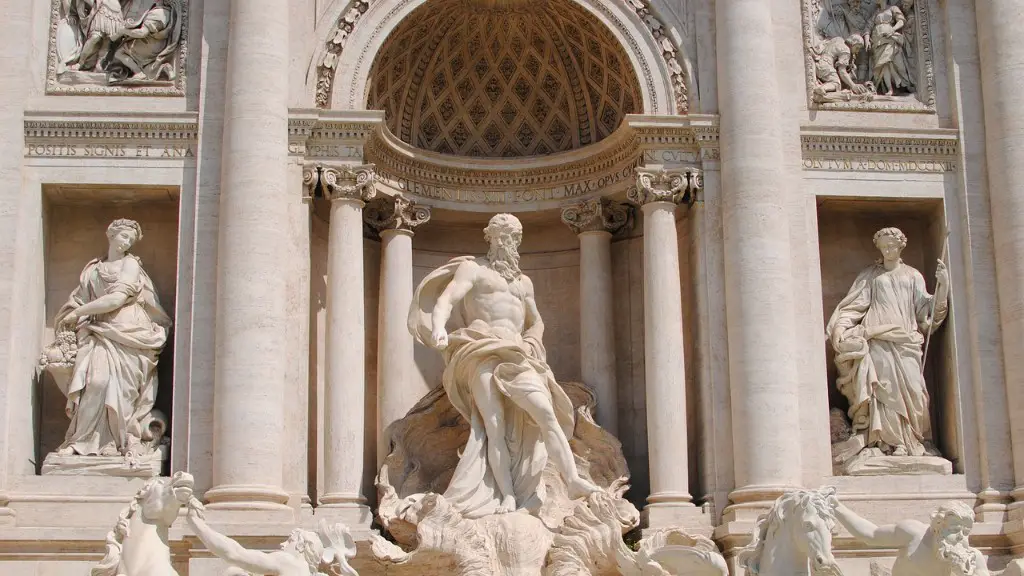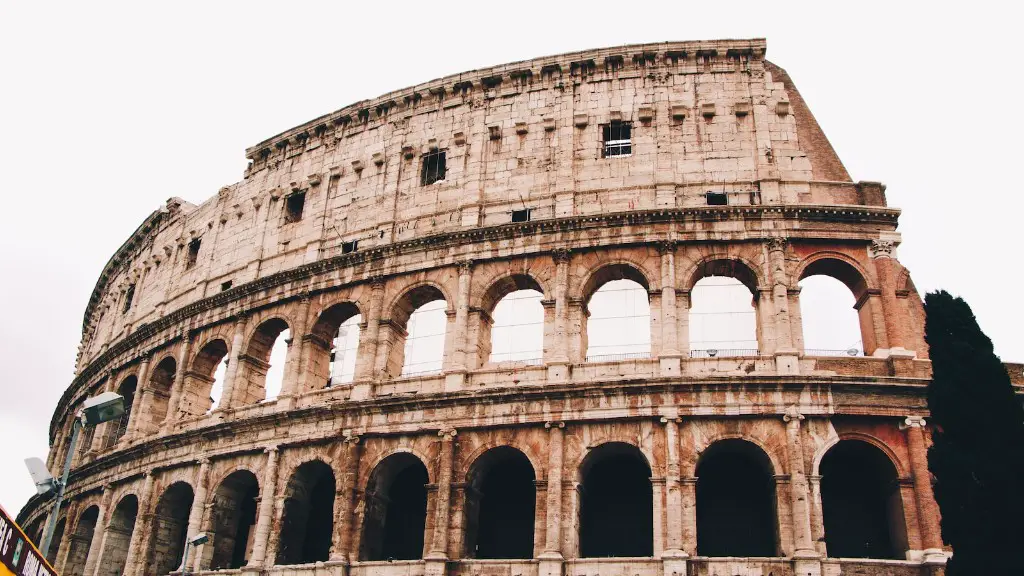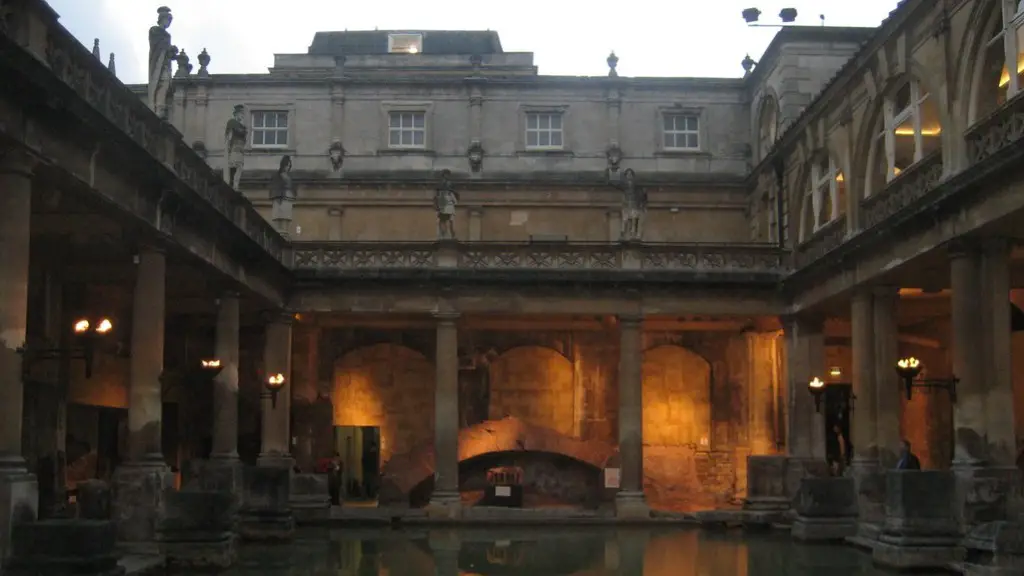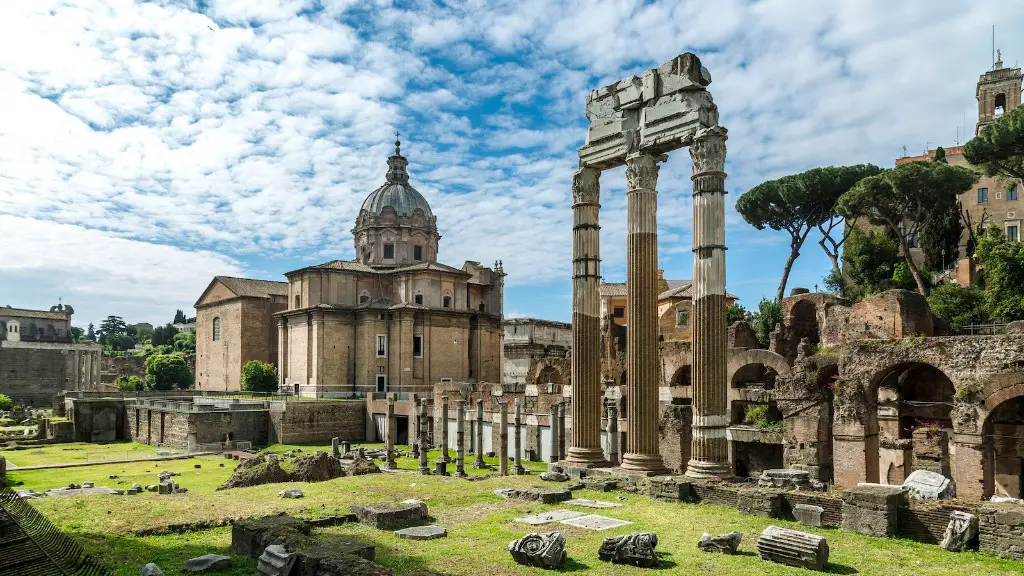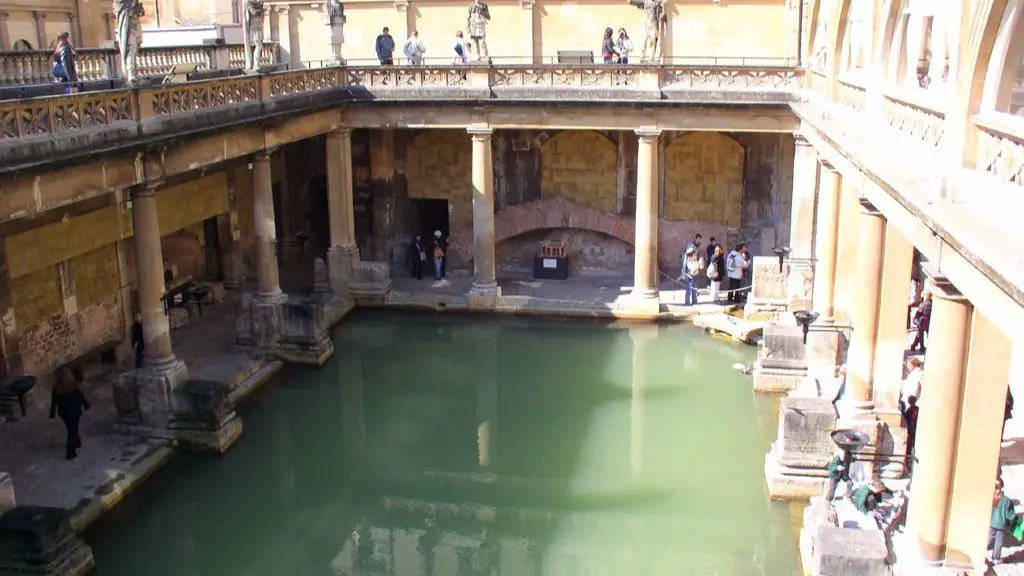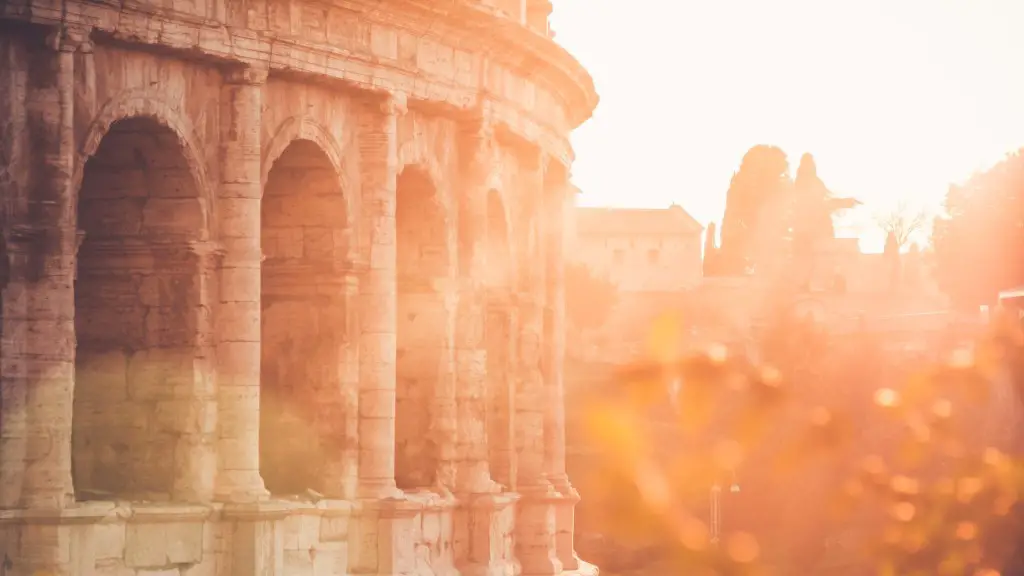Socioeconomic Benefits
The Colosseum in Rome was the most recognizable Roman structures in the world and held an important place in the life of Rome’s citizens. The Colosseum was a remarkable place of entertainment and a symbol of social and political control throughout the Roman Empire. It was built in 80 AD as a place to hold public spectacles, but it also served other functions. Initially, the Colosseum was built to provide a venue for gladiator battles and other forms of public entertainment. This served two purposes: first, the gathering of citizens in the Colosseum provided an opportunity for the Roman government to display its wealth, strength, and power.
The construction of the Colosseum provided a great boon for Rome and its citizens. While the Colosseum was expensive to build, it provided an economic boost for the city as it provided jobs for engineers, builders and laborers, and gave support to local businesses, such as stone and lumber suppliers. The influx of people to the city to watch the events further stimulated the local economy and created more opportunities for merchants and other businesses. The Colosseum also drew international tourists and scholars, which provided the city with a significant source of revenue.
The presence of a place such as the Colosseum also had a profound effect on the citizens. For a people accustomed to living in an imperial environment, the Colosseum was an impressive display of Rome’s power and prestige. For the common people, it was a source of entertainment and diversion. People could gather in the Colosseum to witness bloody gladiator fights, exotic animal displays, and impressionistic stunts, which allowed them to take their minds off of the harsh labor of everyday life.
Historical Significance
The Colosseum has stood for more than two thousand years and has withstood the test of time, making it one of the most iconic structures in the world. Historically, the Colosseum was used for several purposes: it served as a venue for Roman citizens to view gladiatorial battles, animal shows, executions, and other public spectacles; hosted Christian martyrs and, later, congregational gatherings; and was used to stage epic theatrical performances. Over the years, it has also served as a source of inspiration for architects, writers and poets, and has become a symbol of the power and the glory of the Roman Empire.
The Colosseum has come to represent a grandeur and magnificence that has not been seen in any other structure of its kind. It is the most distinctive symbol of Rome, of its history and culture, and of the Roman Republic. It stands as a reminder of the grandeur and greatness of Rome, and serves as a reminder of the past and its ability to endure throughout a tumultuous history. It has become a symbol of the collective culture of the Roman people, and an enduring reminder of its spectacular history.
The Colosseum has also served as an inspiration for the construction of many other grand structures such as Rome’s Colosseum-inspired stadium in Naples, the San Siro stadium in Milan, and the Olympic Stadium in Turin. Even today, the Colosseum continues to represent the grandeur of Rome, providing a constant reminder of its history and culture.
Architectural Features
The Colosseum is one of the most impressive and iconic structures in the world. It is a masterpiece of engineering and design, and stands as a testament to the sheer power and grandeur of the Roman Empire. It was the largest amphitheater ever built in the Roman Empire and the largest in the world. It was constructed with a number of impressive features, such as the three storey seating arrangement, the elevated podium for the emperor and other important dignitaries, and the intricate vaulted ceilings.
It was also designed to be a large and impressive structure. The Colosseum is 188 metres long, 156 metres wide and 50 metres high, with a capacity of 55,000 spectators. It was built with a number of materials, including stone, brick and concrete, and was decorated with elaborate marble facades, stylized columns and statues. The structure itself was made to be strong and resilient, able to withstand the vast array of activities and public spectacles it was built to host.
The Colosseum was also designed to be aesthetically pleasing, and many of its features have been emulated in stadiums and amphitheaters around the world. Its beautiful masonry facades, elegant arches and its grand scale gave it an imposing and majestic presence, making it a symbol of the power and grandeur of Rome.
Implications of the Colosseum
The Colosseum stands as a reminder of the cultural and political importance of Rome. It is a symbol of the power and grandeur of the Roman Empire, the culture and the spirit of its people. The Colosseum continues to shine as a beacon of light, a reminder of the far-reaching impact the Roman Empire had on the world and of its ability to withstand the test of time.
The legacy of the Colosseum is also evidenced in modern day stadiums, which have been constructed with similar design features, such as the three-level seating arrangement, the elevated podium for the emperor and other dignitaries, and the intricate vaulted ceilings. The construction and ceremonial importance of the Colosseum have also impacted the way these modern stadiums and amphitheaters are used today.
The Colosseum has helped to shape society, culture, and art in a way that few other structures in the world have achieved. It has had a deep and lasting effect on the world, and its impact can still be felt today. The Colosseum stands as a testament to the power and grandeur of the Roman Empire and as a reminder of its amazing and lasting legacy.
Uses of the Colosseum Today
Today, the Colosseum is one of the most popular tourist attractions in Rome and the world. It attracts millions of visitors each year and continues to be a source of awe and inspiration. The Colosseum is now used as a venue for concerts, events, and other public spectacles. It has also become a popular site for weddings and other ceremonial events.
The Colosseum is also a symbol of hope and perseverance and has been declared a UNESCO World Heritage Site. In addition to its historical and cultural significance, the Colosseum serves as an important reminder of Rome’s resilience and its strength to overcome adversity. In many ways, the Colosseum stands as a testament to the strength and determination of the Roman Empire.
The Colosseum continues to inspire awe and admiration, and holds an important place in the world’s history and culture. It is a symbol of the grandeur of ancient Rome and an enduring reminder of the legacy of its great empire.
Political Implications
The Colosseum was an important symbol of political control to the Roman government. It was used to gather large numbers of citizens, which allowed the government to display its power and might. It was also used to intimidate citizens into obedience and to show off their wealth and power. It was a way to express their authority and promote a sense of unity among their subjects.
The Colosseum was also used as a tool of propaganda to sway public opinion in favor of the Roman government and their policies. By showcasing the might of their army and their military achievements, the Romans were able to gain popular acceptance and approval from the populace.
In addition, the Colosseum was used to indoctrinate citizens into the Roman way of life. The spectacles and events showcased in the Colosseum reinforced Roman values and beliefs and served as a way to spread the ideologies of the imperial regime among their citizens.
The Colosseum was a potent symbol of political control and domination, and served as a reminder of the strength and power of the Roman Empire. It also served to remind citizens of their roles as loyal subjects to their government.
Symbolic Significance
The Colosseum is also associated with a number of symbolic meanings. To some, it represents the power and grandeur of the Roman Empire and its ability to endure through the ages. To others, it symbolizes the strength of the Roman Republic and its powerful legacy. The Colosseum is also a symbol of unity and solidarity among the people of the empire and a reminder of their cultural legacy.
The Colosseum has come to represent the spirit of resilience, strength, and endurance of the Roman people and the Roman Empire. It is seen as a symbol of victory and triumph, a reminder of the greatness of Rome and its ability to overcome adversity. In many ways, it stands as a representation of the indomitable spirit of the Roman Empire.
The Colosseum has also come to represent the spirit of perseverance in the face of adversity, and stands as a reminder of the spirit and determination of the Roman people. It has become a symbol of hope for many, a reminder of the capacity of even the most powerful empires to endure through the ages.
The Colosseum has come to stand for a great many things, but most of all it stands for the same spirit of boldness and determination that has characterized the Roman Empire for centuries. It is a reminder of the resilience and strength of the Roman people and the greatness of their culture and legacy.
